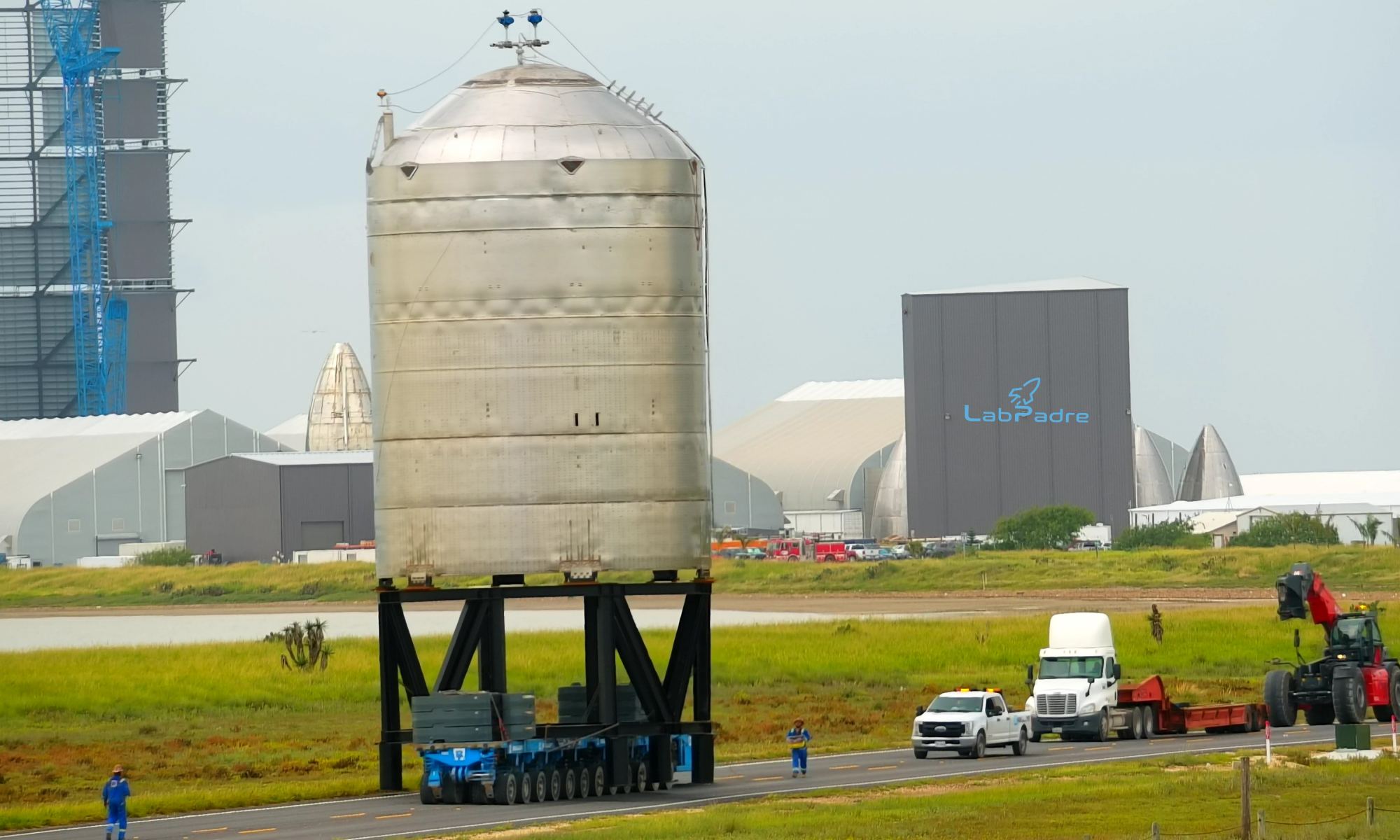They say that failure can be the greatest teacher of all, and it’s easy to see why. Those who learn from their mistakes become informed as to what can go wrong, and will develop the necessary strategies to avoid making the same mistake in the future. This philosophy is also at the core of SpaceX rapid-prototyping process, where full-scale models of the Starship and its components are tested to the point of failure.
At Boca Chica, SpaceX ground crews continue to follow this process in order to get the Starship ready for orbital testing. The latest piece of hardware that was tested to failure was the SN7.1 Test Tank, which was pressurized until it exploded. This test took place a week ago (on the evening of September 23rd) shortly after the SN5 and SN6 prototypes both completed a 150 m (~500 ft) hop test.
News and footage of the pressure test were shared via Twitter by Chris Bergin, the Managing Editor of NASA Spaceflight. The test, which began shortly before 10:30 PM local time (08:30 PM PDT; 11:30 PM EDT), was recorded on-site by Mary McConnahay (@BocaChicaGal) and broadcast via live stream on the NASA Spaceflight Youtube channel.
This was the second test to fail involving a test tank, the previous being the deliberate pressurization and popping of the SN7 – which happened on June 15th, 2020. Like it’s predecessor, the SN7.1 is manufactured from a new type of stainless steel (304L) and using a new manufacturing technique. However, the SN7.1 is the largest tank to be built from this alloy (or a variation thereof), which made this test particularly important.
As you can see from the video (posted below), the ground crews began to load the tank (which showed signs of venting) and within a few hours, the tank entered the “Frost Forming” phase. By 03:45 AM CDT (01:45 AM PDT; 05:45 AM EDT), the tank began venting a significant amount of vapor, which became torrential after about 4:00 AM.
At about ten minutes shy of 05:00 AM, the tank showed signs of spilling liquid nitrogen over one side, which was similar to what happened during the SN7 tank test. Shortly thereafter, the groundcrews closed the valves at the top of the tank, which resulted in overpressurization that caused the tank to “pop” at 04:58 AM (6h 28m 46s into the livestream).
The explosion occurred at the top of the tank and sent clouds of ice and vapor all across the landing pad. As the clouds dissipated, it was clear that the top had been blown clear off. As with the previous test tank, the crews at Boca Chica will be poring over the data accumulated during the test, which will help inform the over the design of the SN8.
Speaking of which, the SN8 is in the midst of final stacking operations inside the Mid Bay at the Boca Chica facility. Recently, the fuselage of this prototype was photographed with its tail fins installed, which will be used to conduct a maneuvering test (a “bellyflop“) once it’s ready for a high-altitude hop. SpaceX has now focused all of its attention on this crucial step now that the SN7.1 test is complete.
Earlier this month (Sept 12th), Musk tweeted that the “SN8 Starship with flaps & nosecone should be done in about a week. Then static fire, checkouts, static fire, fly to 60,000 ft & back.” This hop test will be the first time that a Starship prototype is equipped with three Raptor engines (SN27s, or possibly the newer SN29s).
However, last week (Sept. 26th), Musk updated the plan once again via Twitter and said that the SN8 will fly to an altitude of about 15 km (50,000 ft). As it descends, the engines will be cut off and the Starship will reorient itself and turn one side of its hull (its “belly”) to the ground. This will test the ability of the maneuvering fins and aerodynamic surfaces to glide back to the landing site.
The most challenging aspect of this test will be the landing portion, which will consist of the vehicle shutting down its engines and “belly-flopping” towards the ground. The purpose of this will be to see if the maneuvering fins and aerodynamic surfaces will allow the Starship to glide back to its landing site. Ground crews will then attempt to relight the engine during the last few seconds and swing the aft back around for a soft landing.
While Musk had previously indicated that SpaceX was planning on moving slowly, conducting several more small hop tests with the SN8 and then attempting a 20 km (12 mi) sometime next year, recent successes seems to have led to an expedited timetable. Based on his most recent statements, Musk my be aiming to conduct the slightly scaled-down 15 km hop before the end of October.
If successful, the Starship will be well on its way to making its first orbital flight. Tests involving the first stage booster (the Super Heavy) is also expected to commence in the near future, which will feature 28 Raptor engines (instead of 31, as previously planned).
Further Reading: NASA Spaceflight

